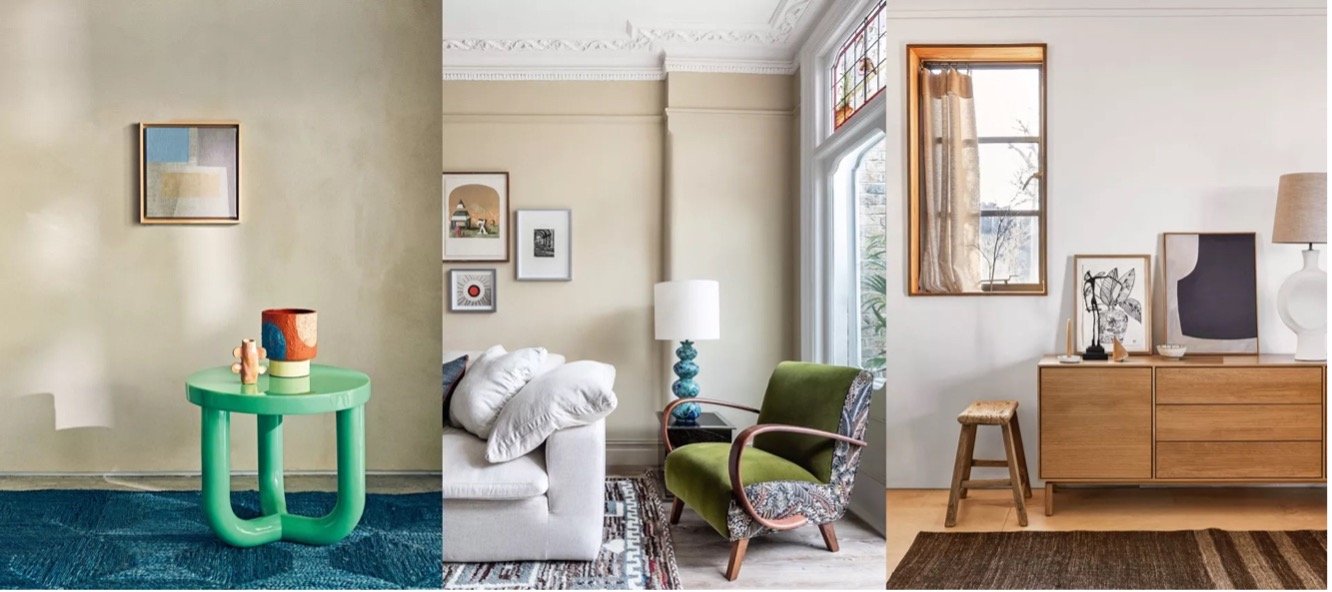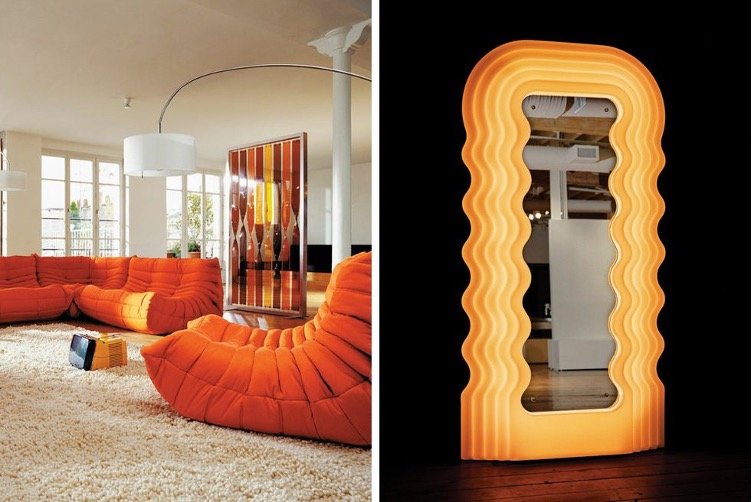The Sunday Edit | Home Decor & Furniture Trends 2023
A Falling Water, Frank Lloyd Wright residence made for the Kaufmann family in rural Pennsylvania.
Following our previous article about sustainable living and cultural enthusiasm for shopping vintage and/or antique furniture to be more eco-conscious, here are a few selected trends to watch out for in 2023.
What Should You Buy?
As we noted in our last blog, fast furniture is out. Today's consumer prefers to maintain a more environmentally conscious approach to interior design. This is why “vintage” continues to be a big trend in 2023, whether it’s for your home or in fashion. As a direct result, values are increasing at auction and estate sales for antiques. On that note, you should buy pieces you fall in love with that also have durable qualities in terms of craftsmanship.
New Horizons quilt pattern
What's In?
Americana, handmade quilts, hand-knotted “landscape rugs” (often hung on the wall as art), fiber art, and quirky vintage pieces all continue to be popular, confirming people’s love for handmade items and their appreciation for skilled craftsmanship in wood working, ceramic, sewing and embroidery.
Geometric shapes framed in gold and silver sequins showed off bewitching decorative motifs in this kaleidoscope of colors on silk pajamas, blouses and dresses at the Dior Fall 2023 show. Source/Forbes
Embroidery
The enduring embroidery/hand sewn look trend in fashion, from a return of knitted pieces, the embroidered and bejeweled handbags by Gucci, to the latest Dior Fall 2023 show, seem to have influenced furniture design as well. The Dior show--which was a fantastic showcase of traditional Indian embroidery and its use of sequins, tiny mirrors, and block printing, from the Chanakya ateliers--illustrates the enthusiasm for skilled craftsmanship across the board.
Embroidery is one of the key spring interior design trends of 2023, as seen in (L) the elaborately embroidered and appliquéd headboards of Natasha Hulse; (C): the highly decorative, faux-naïf blooms of Lora Avedian (Photo: Ellie Smith); and (R): the ultra-pop 1970s-style Lips motif of Kate Loudoun Shand Source/The Bruno Effect
Home Decor and Textiles
At home, natural materials like cork, wood and stone, warm wools, tactile textures like boucle, raw silk, and woven fabric like Ikat (traditional weaving technique from Indonesia) are trending. People continue to move away from buying mass produced items for their homes and more toward unique pieces that embody both form and function. In a world increasingly dominated by synthetic materials and virtual reality, items made by skilled artisans, with a visible touch of hand and use natural materials seem to speak to our soul directly and make us happy more than anything else.
Future I Angel O’Donnell I Jan Baldwin / Source: Homes and Gardens
Biophilic Design
Believe it or not, this design trend has been given the name of “Biophilic Design”. Biophilic design is the theory that humans have an innate connection to nature, and that by creating environments that connect to the natural world, it can dramatically improve our health and well-being. Using natural materials, an architectural design that brings sunlight in, using shapes that occur in nature (which is why curved furniture like sofas and armchairs have been popular lately too), and bringing plants in, are all part of it. Anything that can recreate the human-nature relationship. Fostering this relationship allows us to be more eco-conscious as we become more connected to nature.
Aerial view of Pierre Cardin’s Palais Bulles, in Theoules-Sur-Mer, on the Mediterranean coast in France, and designed by the Hungarian architect Antti Lovag / Source: https://palaisbulles.com
Organic Architecture
This is a concept derived from what Frank Lloyd Wright invented with his “organic architecture” (derived itself of course from what indigenous people have been doing for centuries), where everything relates to one another, thus reflecting the symbiotic ordering systems of nature. Texture artist Kate Blee comments in an article for Homes and Gardens that, “Natural materials offer a multi-sensory experience. They give us something unfathomable that chimes with our humanity” (…) “Often the least processed materials provoke the deepest responses – think of plunging your hands into a bag of rice flour.”
Once described as “a shotgun wedding between Bauhaus and Fisher-Price”, the 20th-century Memphis movement is the Marmite of the design world. Source / The Design Gesture
The Memphis Movement
A design period that one may think is too early for a revival, but that has nonetheless been in the spotlight, is the 1970s/1980s. Furniture from that era has already made a comeback in 2022, and it looks like it is here to stay through 2023. The colorful, fun, more-is-more aesthetic, rebelling against Mid-Century Modern’s timelessness, may be here to deliver us from the doom and gloom of a recession era. Now might well be the time to buy warm and comfy furnishings and deaccession your MCM aesthetic. Whatever the reason is, and however much you consider that era to be tacky in style, you have probably already spotted Memphis inspired furniture & decorative pieces in interior design magazines. 1980s decor dedicated Instagram accounts have flourished lately too.
Togo sofa by Ligne Roset, and Ettore Sottsass Ultrafragola mirror, produced by Poltronova. Source / Gear Patrol
Slouchy Seventies/Wavy Eighties
The emblematic 1973 Michel Ducaroy Togo couch from Ligne Roset has been making a noticeable comeback as well. I remember the Togo couch in my dad’s living room, it was grey, slouchy and so comfy, perfect to enjoy our brand-new VHS tape recorder! It was inevitably paired with a chintz sofa, a fabric type that is making a comeback as well. So, the recycling of ideas, like the recycling of materials now, continues.
Link Library
Why Antiques are the Eco-Option
Like Fast Fashion, 'Fast Furniture' is a Problem for Our Planet
‘Fast Furniture’ Is Cheap. And Americans Are Throwing It in the Trash
Online Auctions Are Catching On - Here’s Why
The Best Ways to Incorporate Vintage into Your Wedding Day
An Unconventional Wedding Registry Part 2: Going Vintage
Does Your Family's Century-Old Pyrex Still Rule The Kitchen?
-Authored by Anne-Claire Regan, Appraisals & Client Liaison, Edited by Heather Zises, Marketing Director
Know. Like. Trust.








